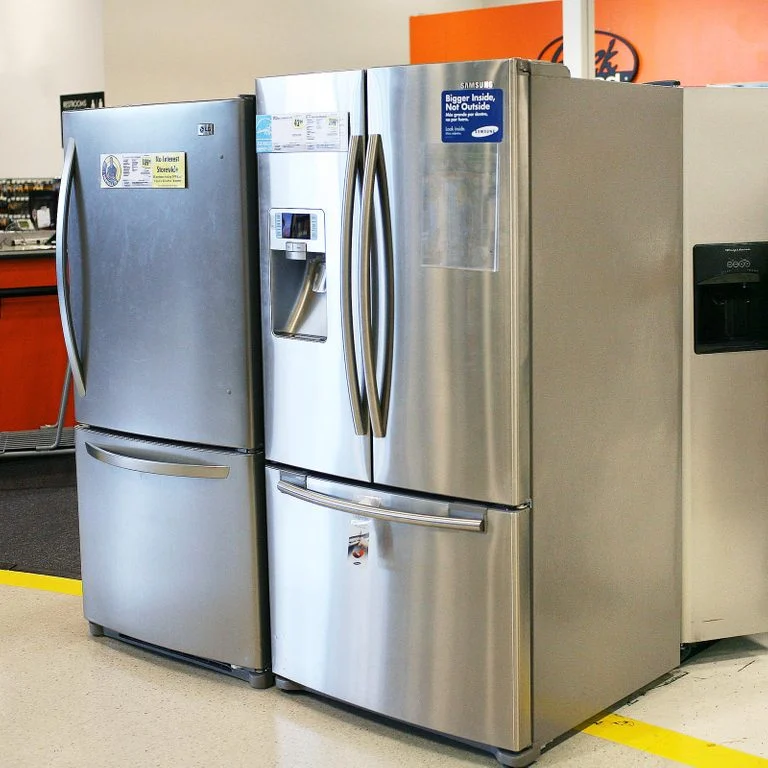Choosing the right refrigerator size is a crucial decision for your kitchen. Your refrigerator is a staple appliance, and its size should not only fit your space but also cater to your family’s needs. In this article, we’ll explore different standard refrigerator sizes, from compact to built-in models, to help you determine which one is the best fit for your lifestyle and kitchen.

The Importance of Choosing the Right Refrigerator Size
The refrigerator is a workhorse in your kitchen, storing fresh food and beverages. Selecting the correct size ensures efficiency, convenience, and harmony in your kitchen design.
Which Standard Refrigerator Size Is Best for You?
- Compact Refrigerators: Ideal for small kitchens, offices, or dorm rooms, compact refrigerators offer basic storage in a small footprint.
- Top-Freezer Refrigerators: Top-freezer models are budget-friendly and suit smaller families or kitchens with limited space. They provide adequate fresh food storage.
- Bottom-Freezer Refrigerators: These refrigerators offer convenient access to fresh food at eye level, making it easy to organize and locate items. They are perfect for medium-sized households.
- French Door Refrigerators: French door refrigerators provide ample fresh food storage, making them ideal for larger families or those who enjoy cooking and entertaining. The double-door design offers easy access.
- Side-by-Side Refrigerators: These models are divided vertically, with the freezer on one side and the fresh food section on the other. They are great for kitchens with narrow spaces but offer less width for larger items.
- Counter-Depth Refrigerators: Counter-depth models align with your kitchen cabinets, creating a built-in appearance without extensive remodeling. They’re suitable for spacious kitchens with a sleek design.
- Built-In Refrigerators: Built-in models are customized to your kitchen design, seamlessly integrating with cabinetry. They provide extensive storage and a high-end aesthetic but come at a premium price.
Factors to Consider When Choosing Refrigerator Size
- Available Space: Measure the space in your kitchen to ensure the refrigerator fits comfortably. Consider height, width, and depth, leaving space for the door to open.
- Family Size and Lifestyle: Think about your family’s size and lifestyle. If you cook frequently or entertain guests, you may need a larger refrigerator.
- Food Storage Needs: Assess your food storage needs. Do you buy groceries in bulk or prefer fresh produce? Consider how the refrigerator’s layout accommodates your items.
- Kitchen Layout: Your kitchen’s layout affects the type and size of refrigerator that fits. Consider how it integrates with your cabinets and appliances.
Conclusion
Selecting the right refrigerator size is a critical decision to ensure convenience and functionality in your kitchen. Whether you opt for a compact refrigerator, a spacious French door model, or a built-in refrigerator, consider your family’s needs, kitchen layout, and available space to make the best choice.
FAQs
- Are there specific measurements for standard refrigerator sizes? Standard refrigerator sizes can vary, but typical measurements range from 28 to 36 inches in width, 28 to 36 inches in depth, and 65 to 72 inches in height.
- What are the energy efficiency considerations when choosing a refrigerator size? Generally, smaller refrigerators consume less energy. However, newer models often have better energy efficiency regardless of size.
- Is it possible to change the direction the refrigerator door opens? Many refrigerators offer reversible door options, allowing you to change the door swing to suit your kitchen layout.
- What is the average lifespan of a refrigerator? The average lifespan of a refrigerator is around 10 to 15 years, although this can vary based on usage and maintenance.
- How do I measure my kitchen space for a new refrigerator? Measure the width, height, and depth of the space where the refrigerator will go. Ensure there’s extra space for the door to open and for air circulation.


